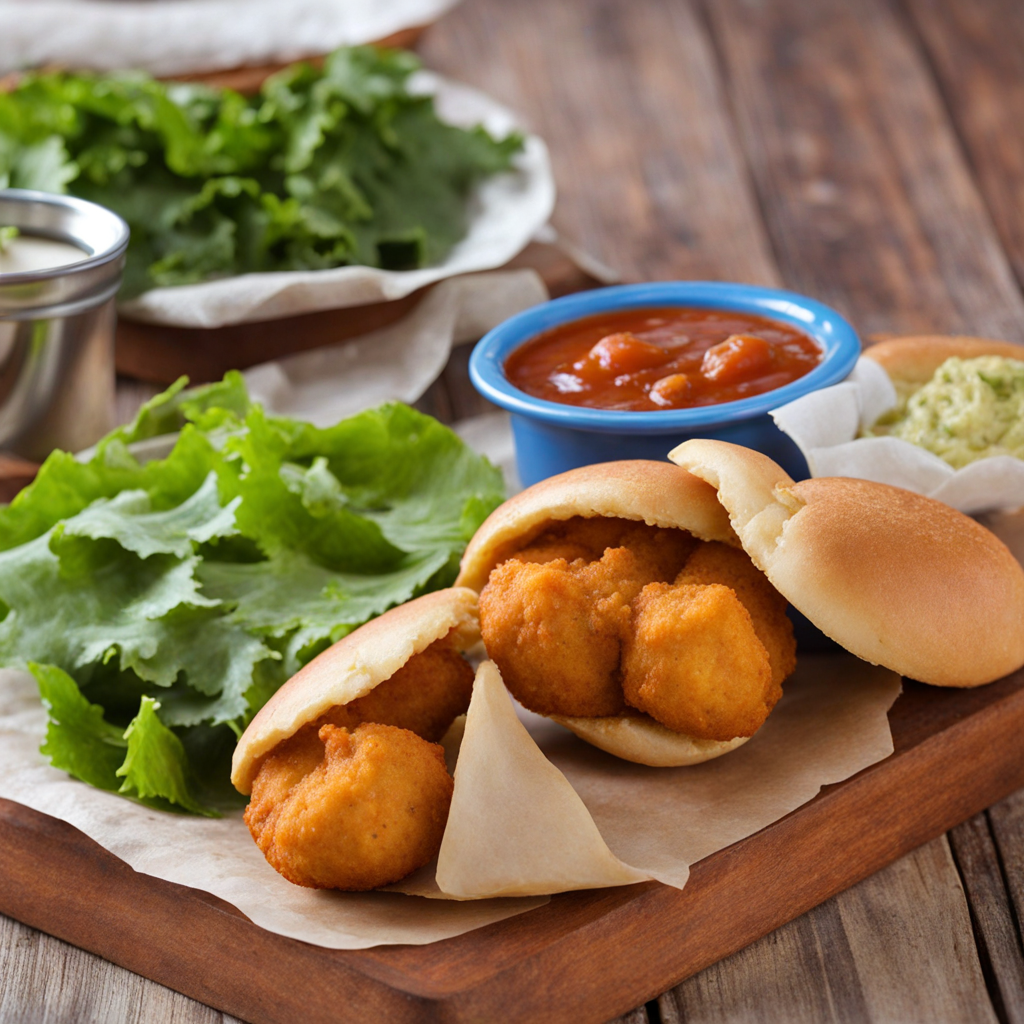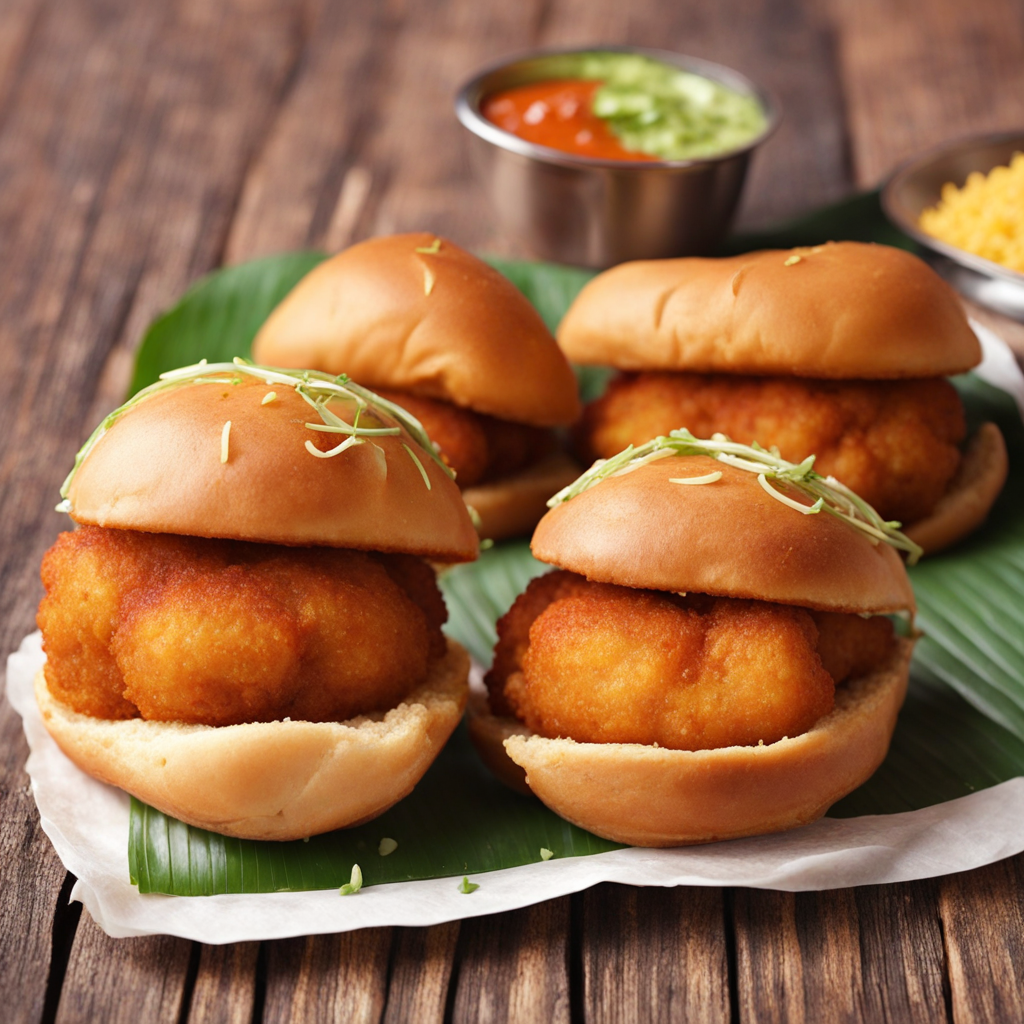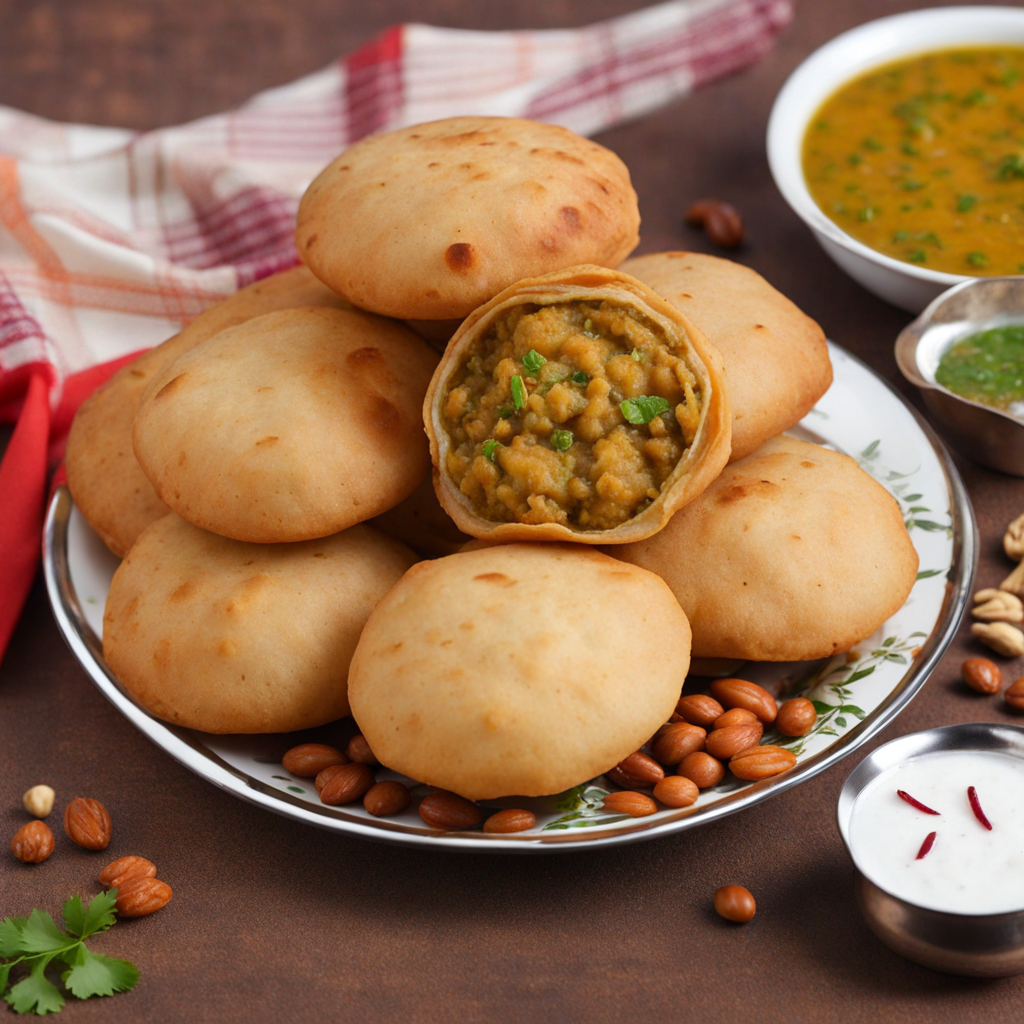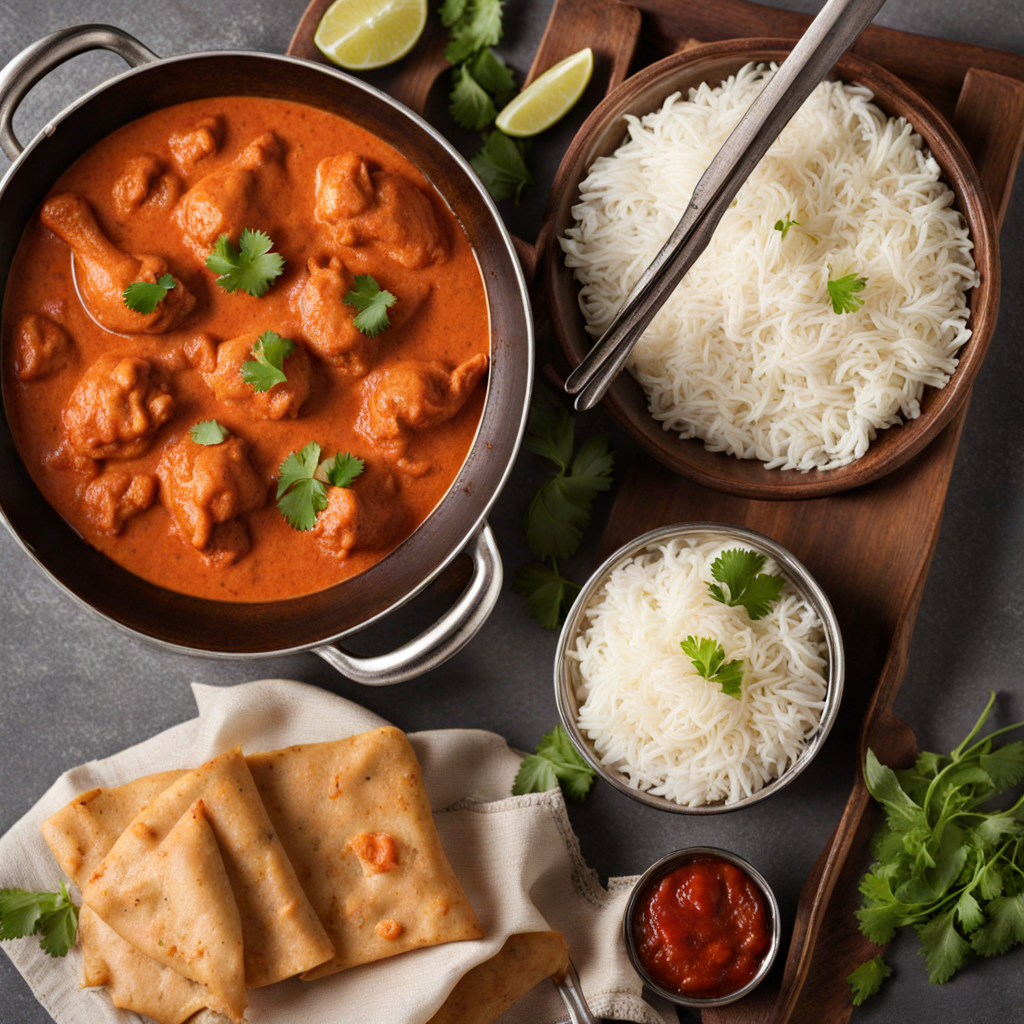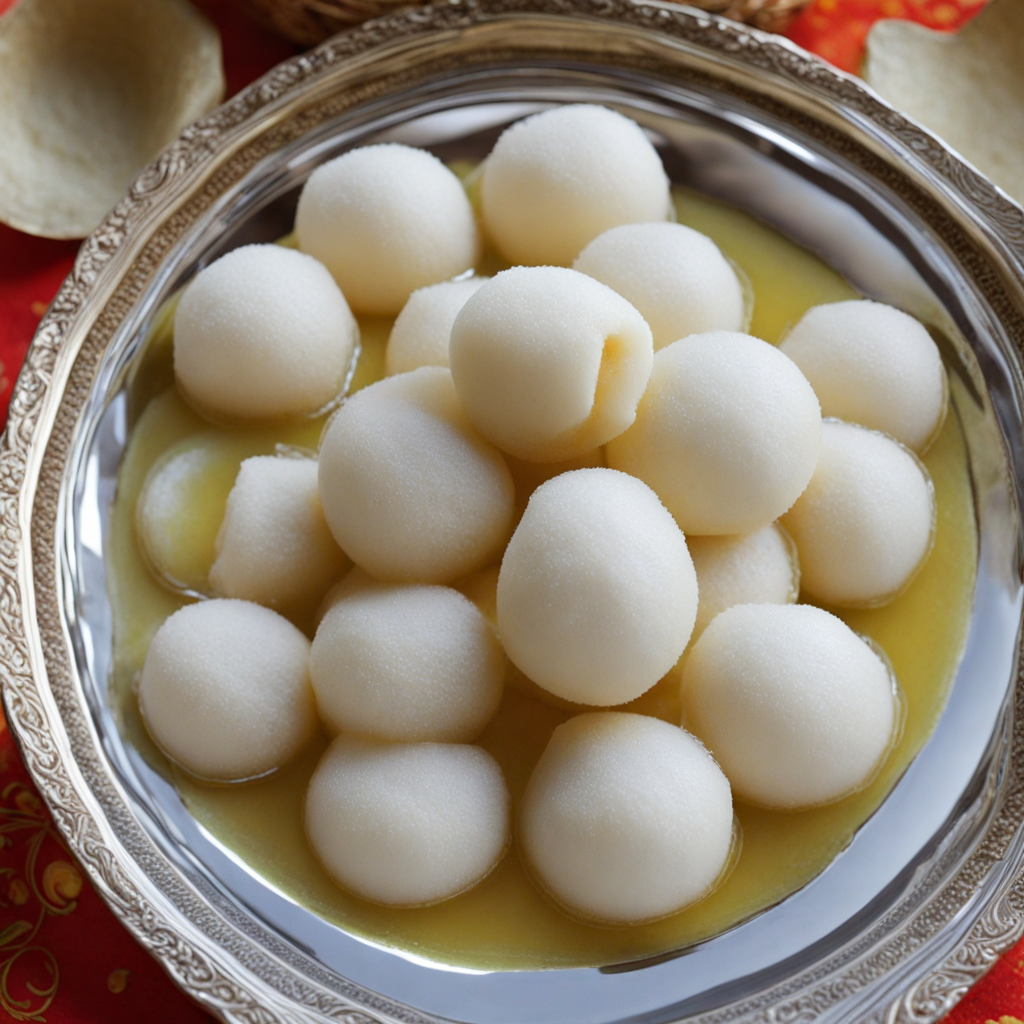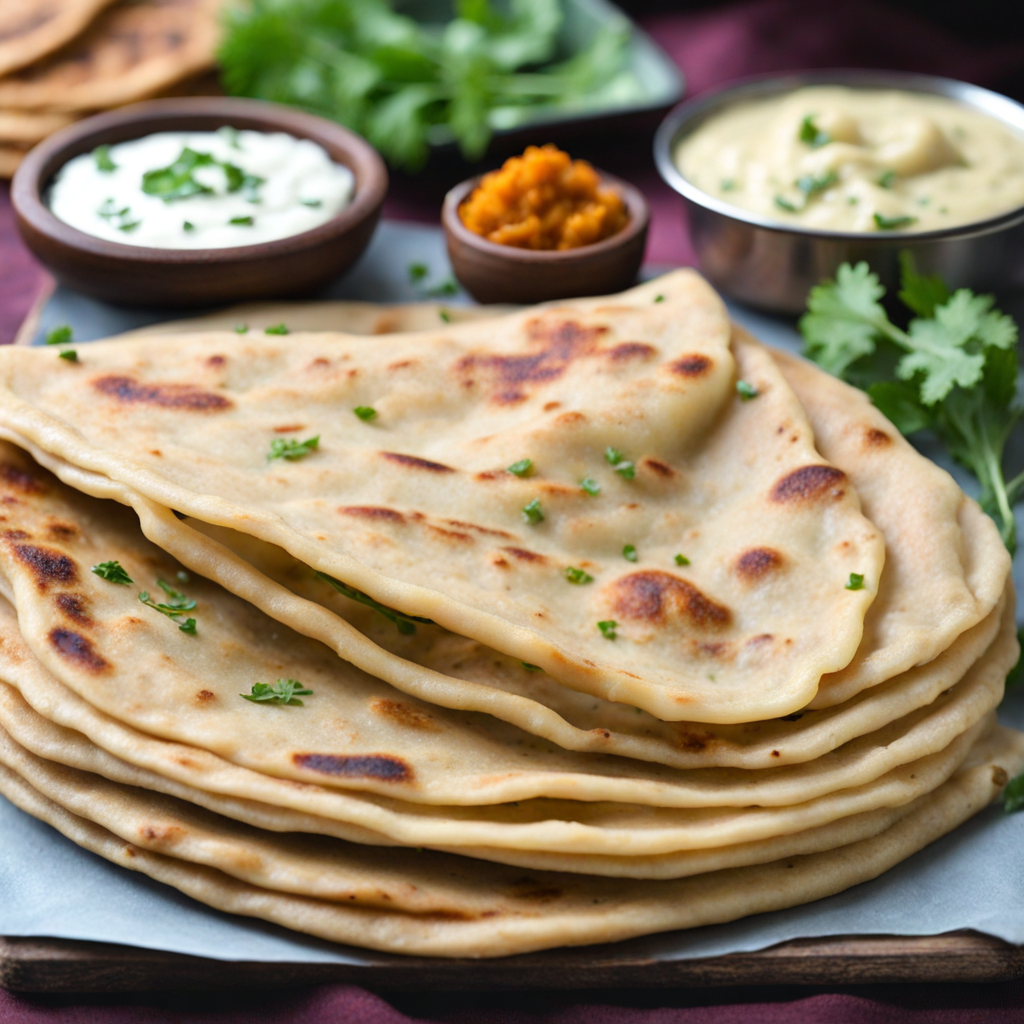Vada Pav
Vada Pav is a beloved street food from India, particularly popular in the bustling city of Mumbai. This iconic snack features a spicy potato filling, known as 'vada,' which is made from mashed potatoes mixed with a blend of aromatic spices, including mustard seeds, turmeric, and green chilies. The mixture is shaped into a round patty and deep-fried in a crispy chickpea flour batter, resulting in a delightful crunch that complements the soft, fluffy bread known as 'pav.' The vada is then nestled within the pav, creating a harmonious blend of textures and flavors that is both satisfying and indulgent. What makes Vada Pav truly special is the array of condiments that accompany it. A popular pairing is the tangy and spicy green chutney made from coriander and green chilies, which adds a refreshing contrast to the rich potato filling. Additionally, a sweet tamarind chutney often finds its way into the mix, providing a delightful balance of flavors. Some vendors also serve fried green chilies or a sprinkling of spicy garlic chutney, enhancing the overall taste experience and allowing for customization according to one’s spice tolerance. Vada Pav is more than just a snack; it embodies the vibrant spirit of Indian street food culture. It is commonly enjoyed as a quick meal on the go, often served with a side of crispy fried snacks like 'bhaji' or 'pakoras.' Whether you choose to savor it on a busy street corner or in a local eatery, each bite of Vada Pav transports you to the heart of Mumbai, where the irresistible combination of flavors and textures continues to captivate the taste buds of food lovers from all walks of life.
How It Became This Dish
The dish known as वड़ा पाव (Vada Pav) is one of the most iconic street foods of India, particularly associated with the bustling metropolis of Mumbai. Its origin can be traced back to the 1960s, a time when Mumbai was rapidly evolving due to urbanization and migration. The city witnessed an influx of people from various parts of India, bringing with them a rich tapestry of culinary traditions. Among these was the humble potato, a versatile ingredient that would soon become the star of this delicious sandwich. The story of Vada Pav begins with the creation of the vada, a spicy potato fritter. Street vendors initially used leftover spiced mashed potatoes, which were coated in chickpea flour and deep-fried to create a crispy exterior. This dish resonated with the working-class population in Mumbai, who were in search of inexpensive, filling snacks that were easy to consume on the go. The concept of the Vada Pav emerged as vendors started pairing the vada with pav, a soft bread roll that had been introduced to Mumbai by the Portuguese. Over time, the Vada Pav became more than just a snack; it evolved into a staple food item for millions. The combination of the spicy potato filling and the soft pav, usually served with chutneys and fried green chilies, created a burst of flavors that was both satisfying and invigorating. This simplicity and flavor made it particularly appealing to the city's laborers and students, who often found themselves in need of a quick meal. As the popularity of Vada Pav grew, so did its cultural significance. It began to symbolize the essence of Mumbai, representing the city's vibrant street food culture. Vendors began to pop up all over the city, from bustling train stations to college campuses, each adding their unique twist to the dish. Some vendors introduced additional toppings like fried green chili, garlic chutney, and even a slice of onion, showcasing the adaptability of this beloved food. The late 1970s and 1980s marked a significant turning point for Vada Pav. It became a staple not just among the working class but also among the burgeoning middle class. This period saw the rise of the iconic Aaram Vada Pav stall near CST Station, which became famous for its flavorful vadas and prompt service. Similarly, Anand Stall in , known for its crispy vadas and delicious chutneys, further popularized the dish among college students and young professionals. Despite its humble beginnings, Vada Pav began to gain recognition beyond the streets of Mumbai. In the 1990s, with the advent of globalization and the rise of food culture, Vada Pav started to be featured in food festivals and culinary events across India. Chefs began to experiment with the dish, offering gourmet versions in upscale restaurants, while still retaining the essence of the original street food. This fusion of traditional and modern culinary practices allowed Vada Pav to reach new audiences, including those who may have never encountered it in its original form. The cultural significance of Vada Pav extends beyond mere sustenance; it serves as a symbol of unity and diversity in Mumbai. The dish is enjoyed by people of all ages, backgrounds, and economic statuses, reflecting the melting pot that is the city itself. It is common to see office-goers, college students, and even tourists standing in line at local stalls, sharing stories and experiences while savoring this delectable treat. In recent years, the rise of social media has further propelled Vada Pav into the limelight. Food bloggers and influencers have taken to platforms like Instagram and YouTube to showcase their love for this street food. This newfound attention has led to a resurgence of interest in traditional Indian street food, inspiring a new generation to embrace and celebrate their culinary heritage. Moreover, the dish has also inspired various adaptations and innovations. For instance, the introduction of Paneer Vada Pav and Cheese Vada Pav caters to a broader audience, including vegetarians and cheese lovers. These variations showcase the adaptability of Vada Pav while retaining the essence of the original recipe. As Mumbai continues to grow and evolve, so too does Vada Pav. It remains a beloved staple that embodies the spirit of the city, serving as a reminder of the rich cultural tapestry that defines Mumbai. Whether enjoyed at a street stall during a busy lunch hour or at a late-night eatery after a night out, Vada Pav continues to hold a special place in the hearts of many. In conclusion, Vada Pav is more than just a dish; it is a culinary icon that reflects the vibrant culture and history of Mumbai. Its journey from humble street food to a symbol of the city's identity is a testament to the power of food to bring people together, transcending social and economic barriers. The continued evolution of Vada Pav ensures that it will remain a cherished part of Mumbai's culinary landscape for generations to come.
You may like
Discover local flavors from India


